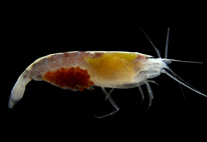Abstract
This manuscript describes the daughter parthenitae (sporocysts) and cercariae of two species of renicolid xiphidiocercaria that infect the California horn snail, Cerithidea californica, which serves as first intermediate host for a diverse and ecologically important guild of digenean trematode parasitic castrators. The two species described here have previously been considered to be a single morphospecies in ecological and evolutionary research. We provide provisional species names to respect that digenean alpha taxonomy is currently focused on sexual (adult) stages, while simultaneously respecting the spirit and utility of formal nomenclature in providing unambiguously unique, species-level names that also clarify to the extent possible species’ taxonomic affiliations. The first species, Renicola sp. “polychaetophila” is most readily distinguishable from previously described renicolid xiphidiocercariae by a combination of (1) having a penetration gland duct arrangement of 2[(1+3+1)+1], (2) having one pair of penetration glands positioned anteriorly to the main gland cluster, (3) lacking tegmental spines, and (4) infecting Cerithidea californica. The second species, Renicola sp. “martini”, is most readily distinguishable from other renicolid xiphidiocercariae that also have tegmental spines by a combination of (1) having a simple, bullet-shaped oral stylet sclerotized for 50–80% of its length, (2) having a cystogenous-gland field with an anterior-most extent about half way between the oral and ventral suckers, and (3) in infecting Cerithidea californica. Phylogenetic analyses using DNA (COI and ITS1) sequence data support that these two trematodes represent distinct species of Renicola. We also (1) provide an emended diagnosis for renicolid cercariae, (2) highlight a few morphological characters that may be useful for future taxonomic work involving renicolid xiphidiocercariae, and (3) suggest that future descriptive work involving trematode parthenitae include more information pertaining to the group of parthenitae as a whole.

